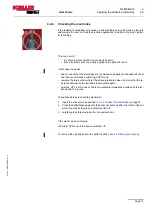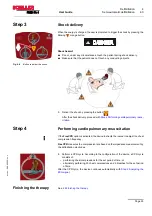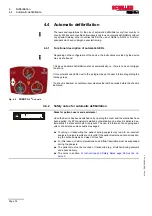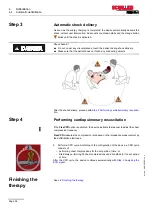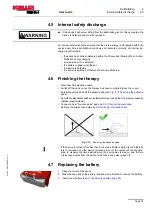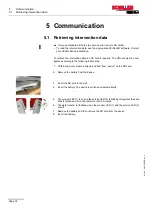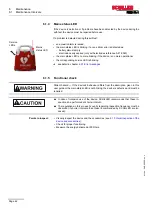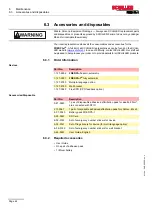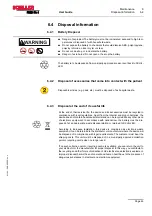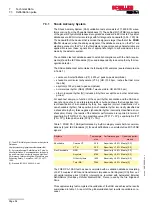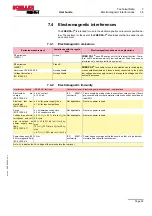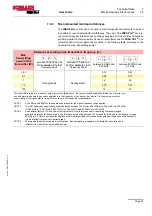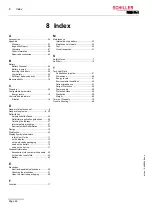
Page 45
Maintenance
6
User Guide
Disposal information
6.4
A
rt.
no.
: 0-4
8-02
40 Rev. c
FRED PA-1
6.4 Disposal information
6.4.1
Battery Disposal
Danger of explosion! The battery must not be incinerated, exposed to high tem-
peratures or disposed of with household waste.
Do not expose the battery to chemicals that could dissolve ABS, polypropylene,
polyvinyl chloride, nickel, mylar or steel.
Do not cut, destroy, or incinerate the battery.
Danger of acid burns! Do not open or heat up the battery.
The battery is to be disposed of in municipally approved areas or sent back to SCHIL-
LER.
6.4.2
Disposal of accessories that come into contact with the patient
Disposable articles (e.g. pads, etc.) must be disposed of as hospital waste.
6.4.3
Disposal at the end of its useful life
At the end of their service life, the device and its accessories must be recycled in
compliance with local regulations. Apart from the internal and plug-in batteries, the
device does not contain hazardous material and can be recycled like any other piece
of electronic equipment. In accordance with national law, the battery must be dis-
posed of at an appropriate waste disposal station or returned to SCHILLER.
According to European legislation, this device is considered as electronic waste
equipment. It can be returned to the distributor or manufacturer where the device will
be disposed of in compliance with legal requirements. The customer must bear the
shipping costs. This unit must be disposed of in a municipally approved collection
point or recycling centre when no longer used.
If no such collection point or recycling centre is available, you can return the unit to
your distributor or the manufacturer for proper disposal. In this way, you contribute to
the recycling and other forms of utilisation of old electrical and electronic equipment.
Improper disposal harms the environment and human health due to the presence of
dangerous substances in electrical and electronic equipment.

